
Browse an alphabetical list of photographs. These historical images portray people, places, and events before, during, and after World War II and the Holocaust.
<< Previous | Displaying results 2101-2150 of 2641 for "Photo" | Next >>
In a scene from a Nazi propaganda film, Dr. Paul Eppstein (right), Council of Elders chairman, addresses Dutch Jews. Theresienstadt ghetto, Czechoslovakia, August 1944.
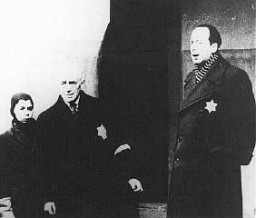
Scene from one of Oskar Schindler's parties in Krakow. At such events, Schindler (second from left) attempted to bribe Nazi officials for information about imminent deportations. Krakow, Poland, 1943.
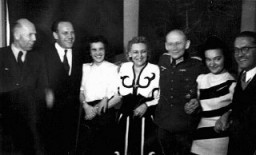
Rows of SA standard bearers line the field behind the speaker's podium at the 1935 Nazi Party Congress. Adolf Hitler addresses the crowds from the podium. Nuremberg, Germany, September 1935.
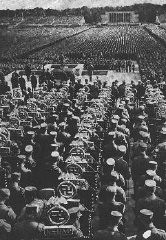
In July 1995, Bosnian Serb forces killed as many as 8,000 Bosniaks from Srebrenica. It was the largest massacre in Europe since the Holocaust. This photograph shows a Bosniak woman at a makeshift camp for people displaced from Srebrenica in July 1995.
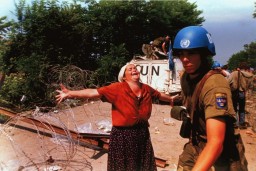
Soon after liberation, camp survivors eat near scattered corpses. Bergen-Belsen, Germany, after April 15, 1945.
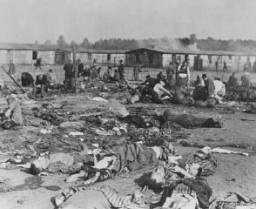
A woman walks along a road past a line of chimneys in the destroyed city of Murmansk. Photograph taken by Soviet photographer Yevgeny Khaldei. Murmansk, Soviet Union, 1942.
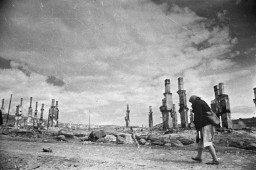
Scene of destruction during World War I: panoramic view of the battlefield at Guillemont, September 1916, during the Battle of the Somme. © IWM (Q 1281)

Houses along the River Meuse damaged during the Battle of Verdun, December 1916. The battle was one of the longest and deadliest of World War I. © IWM (Q 67594)
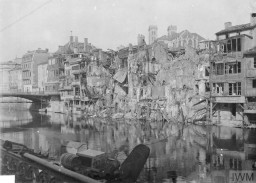
Soon after liberation, camp survivors walk amidst dead bodies. Bergen-Belsen, Germany, after April 15, 1945.
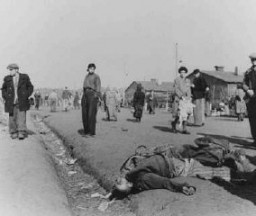
Oskar Schindler standing (second from right) with some of the people he rescued. Munich, Germany, May–June 1946.
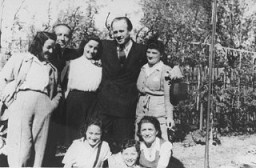
Construction of Oskar Schindler's armaments factory in Bruennlitz. Czechoslovakia, October 1944.
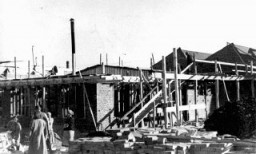
One of the many Jewish schools established by the Joint Distribution Committee in central and eastern Europe for children who had lost their parents during World War I. Rovno, Poland, after 1920.
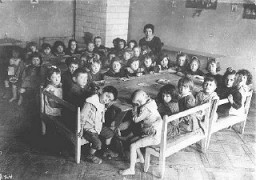
This report card was issued to Regina Laks, a fifth-grade student at the Herzel Hebrew Public School at the Düppel Center displaced persons camp.
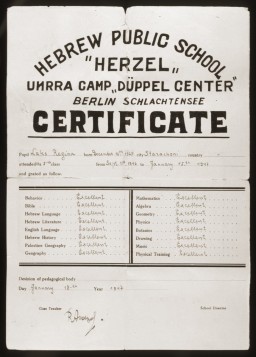
Group portrait of children holding their diplomas at a school in Bitola. Between 1925 and 1938.
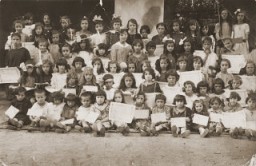
A wall sculpture memorializing Polish Jewish doctor Janusz Korczak resides on the exterior of a teaching hospital that bears his name, Olsztyn, Poland.
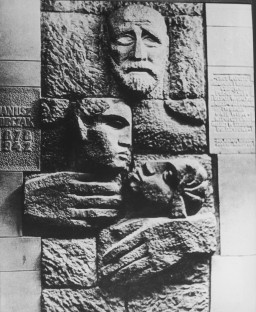
Four days after the outbreak of World War II, Secretary of State Cordell Hull signs the Neutrality Proclamation (first signed by President Franklin D. Roosevelt) at the State Department. Washington, DC, United States, September 5, 1939.
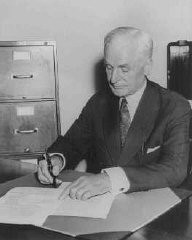
View of the photo mural of a selection at Auschwitz-Birkenau taken through the open railcar on the third floor of the Permanent Exhibition at the United States Holocaust Memorial Museum. Washington, DC, 1993–95.
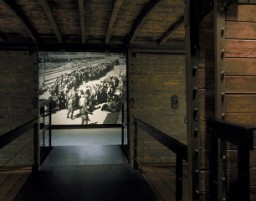
Hungarian Jews wait in front of the Swedish legation main office in hopes of obtaining Swedish protective passes. Budapest, Hungary, 1944. Photograph taken by Tom Veres, who was active in Raoul Wallenberg's efforts to rescue the Jews of Budapest.
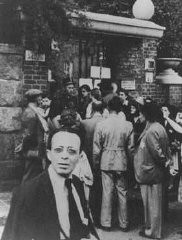
A Jewish passenger prays on board a refugee ship from Germany bound for Argentina in 1938.
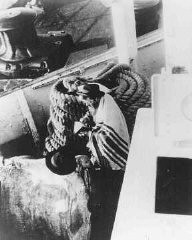
German Jews crowd the Palestine Emigration Office in an attempt to leave Germany. Berlin, Germany, 1935.
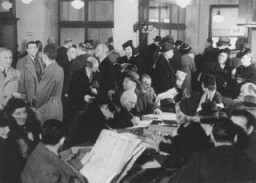
A segregated drinking fountain on the county courthouse lawn in Halifax, North Carolina. Photographed by John Vachon in April 1938.
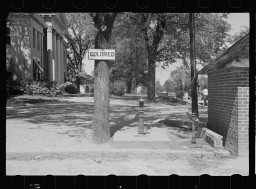
A segregated drinking fountain on the county courthouse lawn in Halifax, North Carolina. Photographed by John Vachon in April 1938.
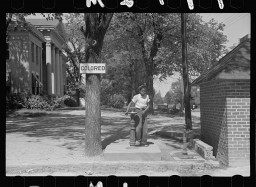
Selma Schwarzwald poses outside while wearing her first communion dress. Selma lived in hiding as a Polish Catholic during the war. Busko-Zdroj, Poland, 1945.
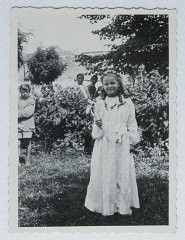
Selma Schwarzwald with her mother, Laura, in Lvov, Poland, September 1938.
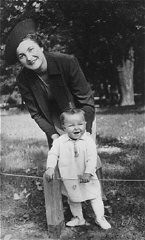
Herta Oberheuser was a physician at the Ravensbrück concentration camp. This photograph shows her being sentenced at the Doctors Trial in Nuremberg. Oberheuser was found guilty of performing medical experiments on camp inmates and was sentenced to 20 years in prison. Nuremberg, Germany, August 20, 1947.
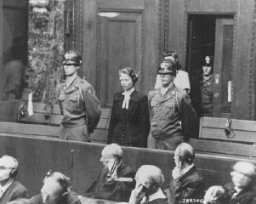
An interior view of the Sephardic synagogue on Luetzowstrasse. Berlin, Germany, before November 1938.
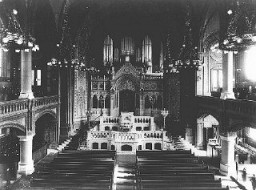
A Serbian gendarme serving the Serbian puppet government led by Milan Nedić escorts a group of Roma (Gypsies) to their execution. Yugoslavia, ca. 1941–1943.
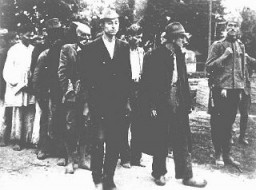
Serbs interned in the Jasenovac concentration camp in Croatia. Jasenovac, Yugoslavia, 1941–45.
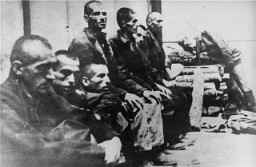
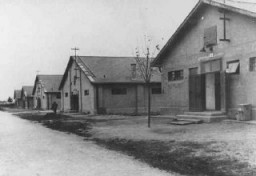
Sergeant Alexander Drabik, the first American soldier to cross the bridge at Remagen, receiving the Distinguished Service Cross for his heroism. April 5, 1945. US Army Signal Corps photograph taken by J Malan Heslop.
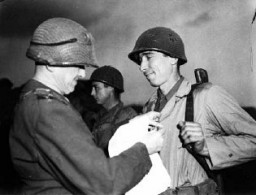
Sergeant Leon Bass and other members of the all African-American 183rd unit witnessed Buchenwald several days after liberation.
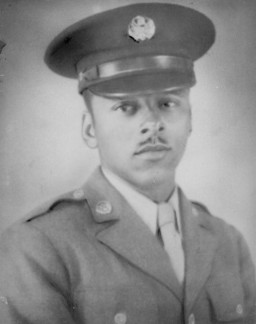
A sergeant pilot of the British Royal Air Force sits in the cockpit of his Spitfire in September 1940. Between July 10 and October 31, 1940, Germany and Britain fought for air control of the English Channel in the Battle of Britain. IWM (HU 104502)
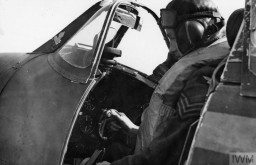
Hot food is served at the displaced persons camp on Arzbergerstrasse. Vienna, Austria, March 1946.
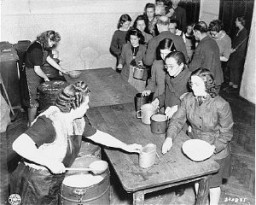
Photograph of seven-year-old Jacqueline Morgenstern in Paris, France, 1940. Jacqueline was later a victim of tuberculosis medical experiments at the Neuengamme concentration camp. The SS took 20 of the children who had been victims of medical experiments at Neuengamme to a school building in Hamburg. Situated on Bullenhuser Damm, this location was a subcamp of Neuengamme. Jacqueline and the other children in the group (10 boys and 10 girls, all Jewish) were killed there.
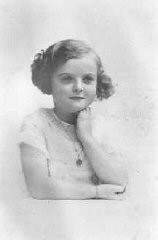
Jewish displaced persons in an ORT (Organization for Rehabilitation through Training) sewing workshop. Landsberg, Germany, between 1945 and 1947.

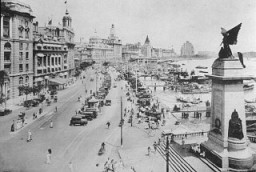
Shimshon and Tova Draenger, members of the underground in the Kraków and Warsaw ghettos and partisans in the Wisnicz Forest. Krakow, Poland, date uncertain.
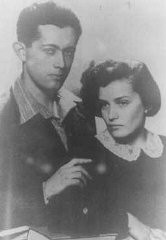
The Gotenland, one of the ships used during the deportation of Jews from Norway to Germany. Norway, 1943.
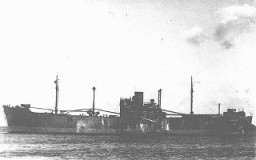
The Donau, one of the largest ships used to deport Jews from Norway to Germany. From Germany, hundreds of Norwegian Jews were deported to Auschwitz. Norway, 1943.
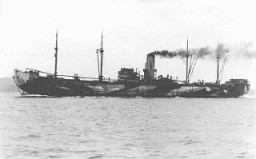
The Monte Rosa (right), one of the ships used to deport Jews from Norway to Germany. Norway, 1943.
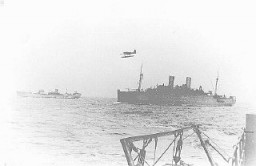
Shlomo Trabska was one of the many Jewish victims who were shot by the SS and Lithuanian collaborators at the Ponary killing site outside of Vilna. This photograph was taken in the late 1930s, when Shlomo was serving in the Polish army.
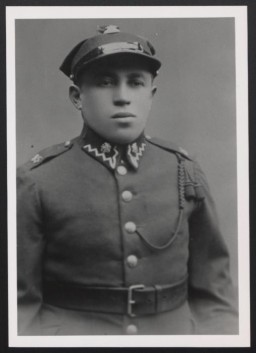
Yiddish writer and cultural activist Shmerke Kaczerginski, who joined Jewish partisans in the Vilna area. 1944–1945.
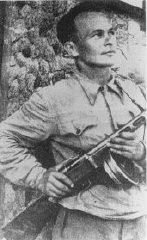
After the liberation of the Flossenbürg concentration camp, two US army infantrymen examine a pile of shoes belonging to victims of the camp. Flossenbürg, Germany, May 1945.

A pair of shoes left behind after a deportation action in the Kovno ghetto. Photographer George Kadish captioned the photo "The body is gone." Kovno, Lithuania, circa 1943.
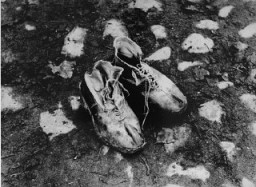
Shoes of victims in the Janowska camp were found by Soviet forces after the liberation of Lvov. Janowska, Poland, August 1944.
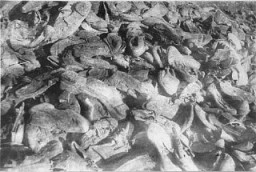
Shattered storefront of a Jewish-owned shop destroyed during Kristallnacht (the "Night of Broken Glass"). Berlin, Germany, November 10, 1938.
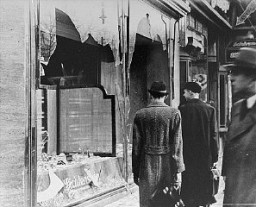
Shoshane Varmel Levy and her son, Jules, wearing the compulsory yellow badge, on a street in Antwerp. Belgium, June 1942.
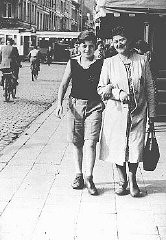
Portrait of siblings Saba and Julek Fiszman after their reunion in Santa Maria di Bagni, Italy, March 1946. Members of the Fiszman family had been separated over the course of the war. While at the Foehrenwald displaced persons (DP) camp, Saba learned from a Jewish Brigade Officer that her brother was in Italy. She traveled to Santa Maria di Bagni, where there was a DP camp, to meet him.
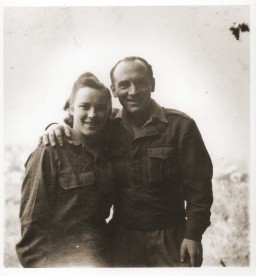
Men, women, and children dig defense ditches during the German siege of Warsaw. Poland, September 1939.

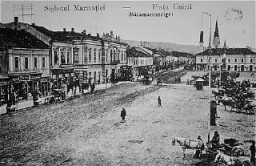
We would like to thank Crown Family Philanthropies, Abe and Ida Cooper Foundation, the Claims Conference, EVZ, and BMF for supporting the ongoing work to create content and resources for the Holocaust Encyclopedia. View the list of donor acknowledgement.